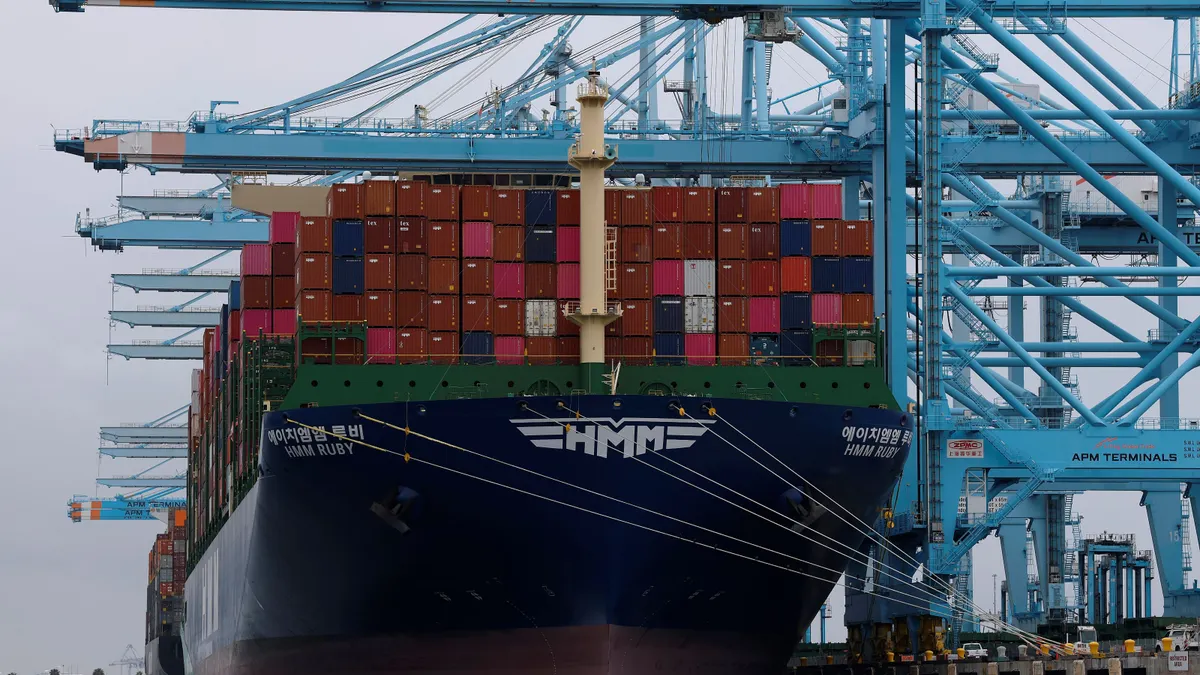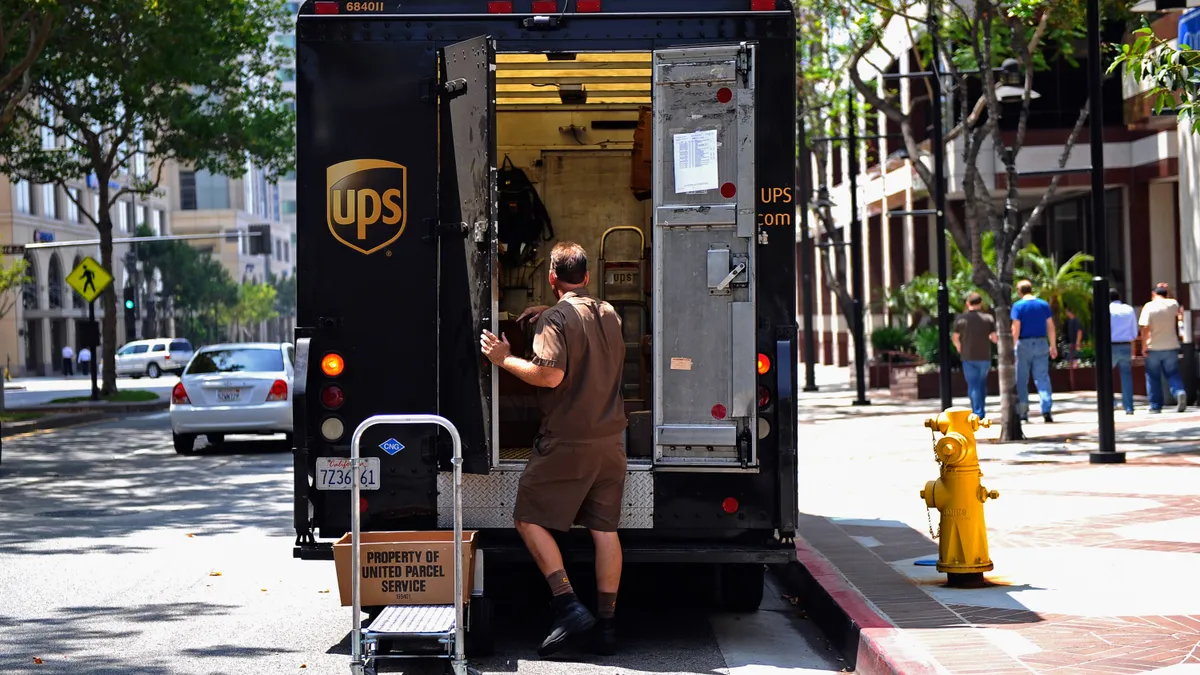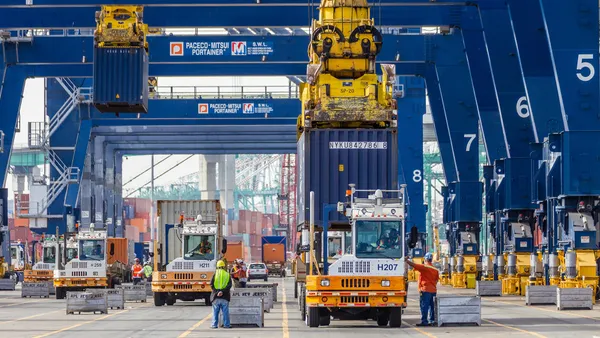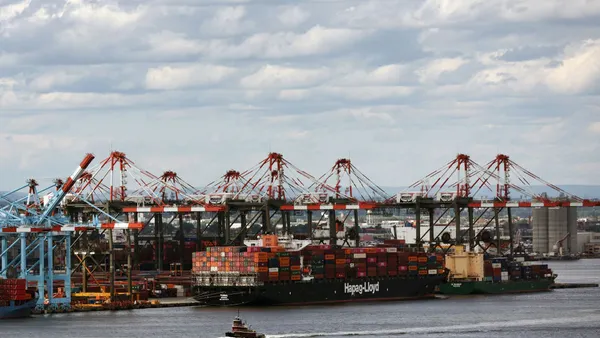Dive Brief:
- Average ocean container spot rates from Asia to the U.S. West and East Coasts have stayed flat since mid-April at $2,790 and $3,830 per forty-foot equivalent unit, respectively, Xeneta reported May 2.
- Year to date, West Coast-bound container spot rates are down 52%, per Xeneta. Spot rates to the East Coast are down 44%.
- The only significant spike in spot rates on the two routes in 2025 occurred April 1, with a 16% month-over-month jump for the West Coast and a 10% increase for the East Coast.
Dive Insight:
Ocean container rates have plateaued on Asia-U.S. trade lanes as blank sailings from China rise, said Xeneta Chief Analyst Peter Sand. Currently, imports from China face at least 145% tariffs.
"Carriers reacted to the drop in exports out of China in the immediate aftermath of reciprocal tariff announcements by the US Government at the start of April by increasing blanked sailings – just as they did so successfully in the early months of the Covid-19 pandemic,” said Sand.
China-to-U.S. freight demand dropped between 30% and 50% in the last few weeks, according to an April 29 industry update from Freightos. About 28% of Transpacific capacity is expected to be cut from the West Coast in the coming weeks, with a more drastic 42% reduction expected to the East Coast.
In turn, blank sailings paired with small signals of recovering demand out of China in the last two weeks of April have been enough to flatten spot rates on U.S.-bound shipments, Sand said.
Since the start of April, there have been over 40 blank sailings between Asia and the West Coast and more than 20 to the East Coast, per data acquired from Sea Intelligence on May 2.
Source: Sea Intelligence
Shippers had been frontloading cargo to get ahead of rising costs from new tariffs. The push to move inventory prompted a rise in volumes, with the Port of Los Angeles, for instance, handling more than 2.5 million total twenty-foot equivalent units in Q1.
Around mid-April, the surge in shipments contributed to a week-over-week uptick in Asia to West and East Coast spot rates, but overall have been on a steady decline since the beginning of the year.
If tariffs create a spike in consumer goods costs that suppresses U.S. consumer demand in Q2, subsequently impacting container shipping volumes out of Asia, carriers will have to work hard to maintain higher container spot rates, according to Sand.
“The current flat spot market is probably a fairly brief interlude before the downwards trend continues,” he said.
Correction: A previous version of this story included a number without context. Mid-April saw a week-over-week uptick in ocean shipping spot rates, despite declines at other points in the year.















